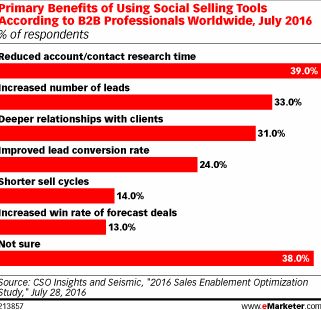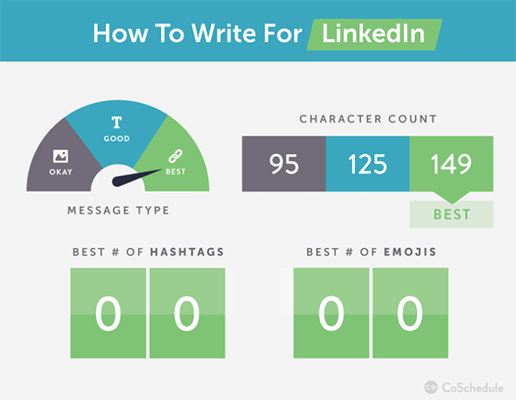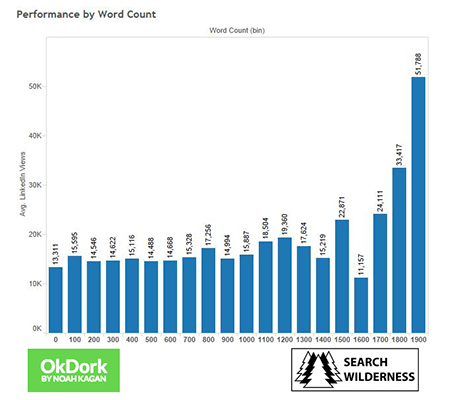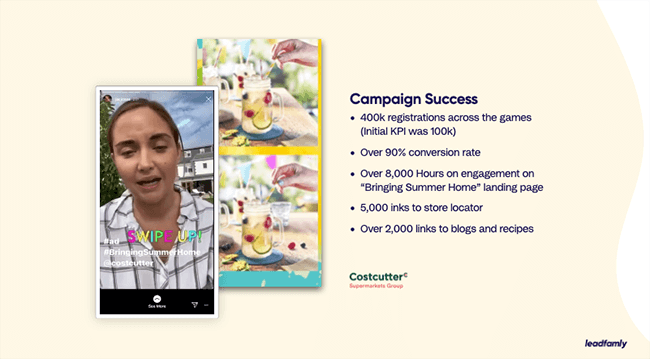25+ Latest Social Selling Statistics For 2024
Are you looking for the latest social selling statistics? We’ve got you covered.
In a world that’s gone digital, how do you establish deeper relationships with leads and existing customers? Well, you interact with them through social media networks.
Social selling is the process of reaching out to potential or existing clients through social media platforms. For instance, you can like, share, or comment through their posts.
Think of it like starting conversations with potential customers as soon as they walk in through your door — only this time, you’re leveraging social media.
In this post, we’re sharing all of the social selling statistics and trends you need to know.
Editor’s picks
- 72% of salespeople that use social media tend to exceed their quota. (A Sales Guy Consulting)
- Many turned to social selling after losing jobs because of the pandemic. (Glossy)
- Customers are 57% through the purchase process before talking with a salesperson. (Anthony Barnum)
Social selling adoption statistics
Marketers and salespeople have used social selling to their advantage for a long time. And based on these statistics, things must have worked out for them. There’s no denying that social selling generates sales.
Below are some of the interesting ways people have used social selling. There are also insights into why marketers believe that social selling works.
Social selling improves your chances of getting sales.
According to LinkedIn, people that can use social selling effectively on its platform would have 45% more sales opportunities, 51% more likely to hit their quota, and a 78% chance of outselling peers who don’t use social media.
Source: LinkedIn Sales Solutions
A B2B sales rep made the fastest sale of his career using Twitter.
When a B2B sales rep was going through Twitter, he noticed a tweet that mentioned how poorly web conferencing works. He set up his Twitter (via TweetDeck) to send him notifications when relevant keywords appeared in a tweet regardless if the rep “followed” the user or not.
The user who sent that tweet happened to be a CEO of a company. The rep called the company and got to talk with the CEO.
The rep mentioned that he worked at PGi that offers a conferencing service. After some back and forth, the CEO signed an agreement in a matter of hours. The rep closed the sale thanks to Twitter.
And there are a number of other Twitter automation tools that you can use to help you with this type of marketing strategy.
Source: Harvard Business Review
72% of salespeople that use social media tend to exceed their quota.
72% of salespeople exceed their quota by as high as 23% if they use social media. The same percentage of salespeople also outperform peers that don’t engage leads on social media platforms.
The same source notes that there’s a direct correlation between closed deals and social selling tactics. 54% of survey respondents have associated closed deals with their engagement on social media.
Source: A Sales Guy Consulting
Reduced contact research time is the main benefit of social selling.
According to 39% of B2B marketers, social selling reduces their account/contact research time which makes it their top reason for using this sales strategy.

Other reasons why B2B marketers like using social selling include increased number of leads (33%), they’re able to build deeper relationships with clients (31%), improved lead conversion rate (24%), shorter selling cycles (14%), and an increased win rate of forecast deals (13%).
38% of sales professionals aren’t sure about the benefits of using social selling.
Source: CSO Insights + Seismic (via eMarketer)
49% of B2B enterprises have social selling programs.
A Forrester study (via Anthony Barnum) found that 49% of B2B enterprises already have a social selling program today. And about 28% have a social selling program in the works. Only 2% of surveyed B2B companies have no plans of making social selling a part of their current strategy.
Source: Anthony Barnum
B2B buyers use social media to support purchase decisions.
A social buying study by the International Data Corporation (via Businesswire), noted that 75% of B2B buyers and 84% of c-level/vice president executives use social media to support their purchase decisions.
The same study noted that B2B buyers that are most active in using social media to support their purchasing decisions had 84% bigger budgets, made 61% more purchase decisions, and had more influence over a greater span of purchase decisions than buyers who do not use social media when buying products.
This is yet another reason why you should have a strong social media presence. You should be ready to engage these big buyers at any time. And leverage the power of social media automation tools to save yourself time & resources.
Source: International Data Corporation (via Businesswire)
Now is the time for social selling.
Most events had been canceled due to the Covid-19 pandemic. That’s tough for traditional B2B industries that rely on social events to meet prospective clients. But they could leverage social media to fill in the gaps left by canceled events.
There are plenty of reasons why they’d want to use social selling. 97% of customers research products online. What’s even more surprising is that 47% of customers would have looked at three to five pieces of content before talking to sales reps.
This is why having a social media strategy that includes social selling makes the most sense while we are in a global pandemic.
Source: Forbes
Many turned to social selling after losing jobs because of the pandemic.
With unemployment numbers in the United States hitting millions, some turned to social selling gigs with Beautycounter and Stella & Dot’s family of brands for income.
That is great news considering that people are still willing to spend on small luxuries even if there’s a pandemic. It’s a win-win for everyone concerned.
Source: Glossy
Seismic went ahead and acquired Grapevine6 to enable social selling.
Seismic is an award-winning sales and marketing enablement platform provider. And by acquiring Grapevine6, it can now provide sales professionals with content sourced from 11,000 third-party publishers.
Now, Seismic will have a social engagement solution for sales and client-facing teams.
This only goes to show how certain companies are viewing the importance of social selling to raise their sales.
Source: Scoop Independent News
Social selling business statistics
There are plenty of businesses that are either using social selling now to boost sales and meet quotas or have plans on using social selling in the near future.
It’s interesting how most of the companies in this section still managed to grow their business during the height of the pandemic thanks to social selling.
Customers are 57% through the purchase process before talking with a salesperson.
On average, a customer will be 57% through the purchase process before they even start talking with sales reps. That’s because most of the information that a lead will need can be found online. That’s why they’re more proactive with product research.
And guess what? A survey found that 75% of B2B buyers use social media to be more informed about vendors they’re interested in. That’s why it’s so important to include social selling in your social media marketing strategy.
Source: Anthony Barnum
Express Inc is investing in social selling to boost its profits.
Express Inc has just announced that its next big project is investing in social selling to improve its profits. It’s committing to generate over $100 million in operating profit on $2.1 billion of sales by 2024.
Source: Sourcing Journal
CommentSold is growing larger with its latest strategic investment.
The social selling platform, CommentSold, is making waves after its partnership with private equity firm Permira. CommentSold said that it will use the money it received from Permira to accelerate its growth plans.
The company currently supports 6,000 independent sellers and SMBs. It has over 12 million registered users. 12 months before the partnership, CommentSold generated more than $1 billion in gross merchandise value.
Source: Yahoo Finance
L’Oréal invested in social-selling software to increase revenue.
The beauty brand just invested in a social-selling software to increase its ecommerce revenue by 25% or higher.
It’s working with Replika Software, a tool that allows brands to create a retail partnership with anyone that’s active on social or live streaming platforms.
While this turnkey social selling software isn’t available to everyone, you can still achieve good results by using social media publishing software to promote products that can be purchased directly from your ecommerce store.
In time, we will likely see social platforms develop their own internal social selling software, in a similar way to what Instagram have done.
Source: Cosmetics Design
Natura & Co had growing sales during the pandemic thanks to social selling.
Natural & Co, the company behind brands like Natura, Avon, and The Body Shop, had great sales during the pandemic thanks to social selling. Ecommerce sales grew by nearly 250% compared to the same period one year earlier.
During the lockdown, ecommerce sales grew by 150% at Natura and Avon combined. The Body Shop was even better at 300%.
Source: Premium Beauty News
Related Reading: 22 Top Ecommerce Statistics And Trends You Should Know.
Social selling global statistics
Social selling isn’t just a social media strategy used in the US. Businesses in other countries see the benefits of it as well. That’s why they’re slowly pivoting to include more social selling tactics in their future.
One social selling company even managed to get $1 million pre-seed financing while the world is dealing with Covid-19. This only shows that social media is the best platform for ecommerce during the pandemic.
Tupperware started social selling in response to the Covid-19 pandemic.
Not even Tupperware in India was spared from the effects of the pandemic. To adapt, the company started a social selling strategy.
Tupperware set up an integrated CRM module across channels. This is to create a data-driven and funneled approach in their customer communications.
Source: The Economic Times
A social selling startup in Israel got $1 million pre-seed financing.
An Israeli social selling startup called Bliss managed to secure a $1 million pre-seed financing from Global Founders Capital.
This startup company said that it’s cashing in on the trend of people or businesses getting paid on social media platforms by promoting and selling goods or services from third-party brands. In a sense, Bliss is acting as a middleman between brands and buyers.
Source: Tech EU
Luxury brands use social selling to reach Thai shoppers.
Through Japan’s Line app, luxury brands are using social selling to reach shoppers based in Thailand. This includes brands like Chanel and Louis Vuitton.
Line is popular in Thailand where its monthly active users rose by 3 million. This makes it Line’s largest market just after Japan. That—combined with the booming ecommerce industry during the pandemic—are reasons enough for luxury brands to try and penetrate the Thai market.
Source: Global Cosmetic News
Social selling marketing statistics
What are some of the best social selling best practices? In this section, we’ll share a few facts and figures on what you can do to improve your chances of getting leads and building stronger relationships with existing customers.
The best LinkedIn posts are 149 characters long.
If you want your LinkedIn marketing to be effective, then you’ll have to take the length of your posts into consideration. According to CoSchedule, the best messages are link posts that are 149 characters long.

You’d also have to demonstrate a positive sentiment. And if you’re thinking about adding hashtags or emojis — don’t. Posts without emojis or hashtags tend to perform better.
Source: CoSchedule
LinkedIn users like reading long-form content.
If you’ll use LinkedIn posts to attract potential customers, publish long-form content. According to the guys over on OK Dork, longer content tends to perform better. How long? You’d want to stick with posts that are between 1,900 to 2,000 words.

If you’re unable to publish content that long, you can bring down the word count to 1,700 to 1,800. You bring down your chances of engaging users the lower your word count goes.
Source: OK Dork
Gamification is the future of social selling.
Gamification is when people use game mechanics to engage users into making a purchase. And according to The Drum, it’s one of the ways a seller can amplify the impact of social selling.
In an example they gave, a marketing director at Costcutter managed to get 400,000 registrations using games.

That person also had a 90% conversion rate, had over 8,000 hours of engagement on the company’s landing page, gained 5,000 links to their store locator, and got 2,000 links to blogs and recipes.
Source: The Drum
A WeChat Work feature was predicted to disrupt social selling.
With the rollout of a much-awaited WeChat Work feature called Moments, WeChat Work had the potential to disrupt the social selling landscape. That’s because the feature allowed users to not only share moments with colleagues on WeChat Work but with regular WeChat consumers as well.
WeChat Work is a dedicated tool for business communications. But with the introduction of moments, businesses finally had the option to interact with consumers directly.
Source: Technode
Social selling on LinkedIn statistics
When it comes to social selling, LinkedIn is the top dog. Did you know that LinkedIn created its own measurement system to determine a salesperson’s social selling performance? That’s how committed it is to social selling.
And it really shows. The top performers on LinkedIn actually close more sales than those who don’t use social media to connect with potential customers.
LinkedIn has an index to measure the success of a social selling campaign.
The Social Selling Index (SSI) is the first-of-its-kind social selling measurement system. It’s based on LinkedIn’s 4 Pillars of Social Selling: create a professional brand, focus on the right prospects, engage with insights, and build trusted relationships.
Based on your LinkedIn activity, you’ll receive a score anywhere between 0 to 100. The higher your SSI score, the more you’ll likely meet your sales goals.
Source: LinkedIn Sales Solutions
89% of top-performing salespeople said LinkedIn was crucial to closing deals.
A Forbes article mentions a survey conducted by LinkedIn. In the survey, 89% of the top-performing salespeople noted how important LinkedIn was to closing deals. In fact, 70% of sales professionals on the platform said that they’re only there for business purposes.
The leaders in social selling said that they were able to make 45% more sales opportunities than their fellow salespeople.
Source: Forbes
LinkedIn had to learn how to balance sales activity and user experience.
Today, LinkedIn is synonymous with social selling. But the road to getting there was tough. During the earlier years, marketers had no regard for user experience.
While some marketers played by the rules and were more conservative in their approach, there are others that fired off pitches left and right. This left some buyers feeling overwhelmed.
This was rectified with LinkedIn’s premium subscription because sales reps now had to pay to increase the number of inmails and connection requests that they could send.
Source: Builtin
Note: If you want to learn how to balance sales and user experience (UX), check out our roundup of UX statistics.
Social selling statistics sources
Final thoughts
Social selling has its advantages. That’s why more and more companies are using social selling to improve their sales. It grants them a way to continue connecting with users even while the whole world is on lockdown.
If your company isn’t leveraging social selling, have your salespeople get in touch with clients through LinkedIn or other social media platforms. You might walk away surprised by how much more sales they can generate.
It’s almost a guarantee that social selling is here to stay. So you better get on board or your competitors just might beat you to it. We hope that these social selling statistics are more than enough to convince you of its full potential.
Looking for more statistics? Check out these articles:
